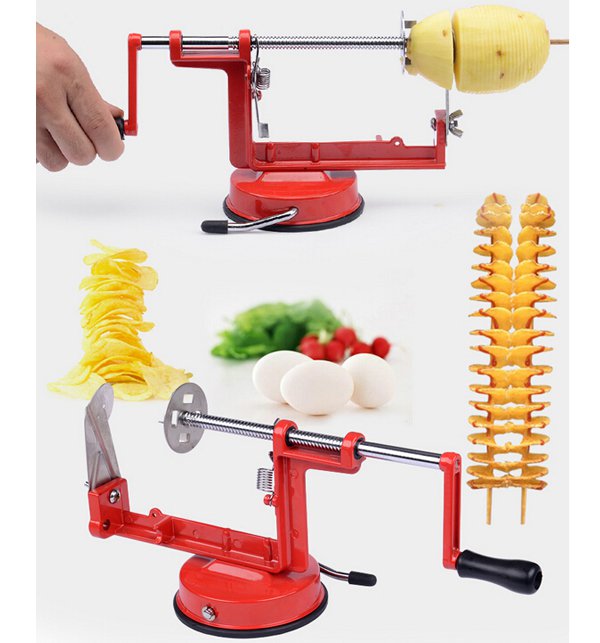

To cook onions more quickly, chop them into pieces that are as small as possible.ĭry the blades. They’re the most efficient models out there and offer the largest range of chopping and dicing options. They also have more stainless steel elements incorporated into the base.Įxpensive: At the high end of the price range, between $60 and $120, you’ll find large-capacity choppers geared toward cooks who regularly prepare large volumes of food. These tend to be heavier because they have more powerful motors and blades. Mid-range: Choppers priced between $30 and $60 include more sophisticated models capable of taking on multiple kitchen tasks. They’re mostly made of plastic with stainless steel blades. Inexpensive: At the low end, between $15 and $30, you can expect to find choppers with two or three chopping styles. Onion choppers range in price from $15 to $125. These choppers stay put during use and, for the most part, tend to have higher-quality construction than models with a plastic base. A stainless steel base, especially in an electric chopper, adds a considerable amount of weight to the appliance. Most inexpensive onion choppers have a plastic base, though some are rather flimsy and unstable during use.

Base: The base is either hard plastic or stainless steel.Most of the plastic and glass bowls are dishwasher safe, so this part of the chopper is easy to clean and maintain. Many of the larger glass bowls, can be removed from the chopper and used as mixing bowls (provided there are no blades attached). However, you’ll find glass bowls most often in premium choppers. You’ll find plastic bowls in choppers at all prices, not just inexpensive models.
#BED BATH AND BEYOND POTATO SLICER PROFESSIONAL#
To make sure they’re sharpened properly, you can take them to a professional knife sharpener to keep them in the best condition.īowl: The bowl or, in some models, box of an onion chopper is made of either glass or food-grade plastic. If you’re interested in an appliance for long-term use, opt for an onion chopper with individual, removable blades. The design of grate blades, particularly in box-style choppers, means they can’t be sharpened.
#BED BATH AND BEYOND POTATO SLICER MANUAL#
If you want more options, you’ll need a manual chopper that comes with a variety of blades or an electric chopper equipped with advanced chopping functions.īestReviews Onion chopper features Materialsīlades: Onion choppers are equipped with sharp stainless steel blades, and like any blades, they can dull over time. For a bit of variety in shape and size, you can precut onions into certain shapes before putting them in the chopper, but there’s no guarantee what shape they’ll end up. Chopping optionsīasic onion choppers only chop onions into one size dice, so if you’re fine with plain diced onions, you can get away with one of the less expensive models. For this level of cooking, expect to look at onion choppers that have at least a three- to five-cup capacity.

A chopper with that capability usually comes with a bowl that’s large enough to accommodate plenty of diced onion. If you’re short on time but need to dice a moderate quantity of onions, such as half a dozen, you’ll need a chopper that can process a larger volume at one time. In these, you can only feed one onion through the grate blades at a time, and the size of the box or bowl that catches the diced onion can only hold a couple chopped onions. If you only need to chop one onion at a time, a small model is ideal, whether it’s a box-style chopper or a small, one-cup electric one. When it comes to capacity, two things go hand in hand: how many onions you expect to dice at once and the size of the chopper’s bowl. Aesthetically speaking, some electric models are designed to match other kitchen appliances, especially those made of stainless steel.

It’s also somewhat more reliable and creates more uniform pieces of onion. As this type of chopper is equipped with a motor, it tends to be more powerful than a manual chopper. Electric: Electric models require little to no effort to operate because they chop with the press of a single button.The onions are catapulted around the bowl and sliced by the spinning blades. Spin: In these choppers, you put the onions in the bowl, secure the lid, and pull a spring that spins the blades. With other models, you place the onions in a bowl and press a button to operate angled blades to strategically dice. Press: With a box-style chopper, you push the onion through a sharp grate to dice it into different shapes, usually small cubes. Manual: Manual choppers are operated by either pressing or spinning mechanisms. Yellow, Spanish, and Vidalia onions all bring different flavors to the table, so use your chopper to experiment with them in recipes.


 0 kommentar(er)
0 kommentar(er)
